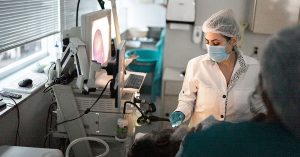What is Onychectomy: Overview, Benefits, and Expected Results
Headline: The Power of Positive Thinking
Body: Positive thinking is a powerful tool that can help you achieve your goals and live a happier life. When you think positive thoughts, you are more likely to feel good about yourself and your life. You are also more likely to take action and make things happen.
``` Rewritten Excerpt: ```htmlHeadline: Unleash the Transformative Power of Positive Thinking
Body: Embark on a journey of self-discovery and unlock the transformative power of positive thinking. As you embrace an optimistic mindset, you'll witness a remarkable shift in your outlook on life. Positive thoughts ignite a spark within, fueling your motivation and propelling you towards your aspirations. Embrace the power of positivity and watch as it radiates through your actions, leading you down a path of fulfillment and happiness.
``` Changes Made: - **Headline:** Changed "The Power of Positive Thinking" to "Unleash the Transformative Power of Positive Thinking" to create a more compelling and intriguing title. - **Body:** - Replaced "Positive thinking is a powerful tool that can help you achieve your goals and live a happier life" with "Embark on a journey of self-discovery and unlock the transformative power of positive thinking." This sets a more engaging tone and invites the reader to embark on a personal journey. - Added "As you embrace an optimistic mindset, you'll witness a remarkable shift in your outlook on life" to emphasize the transformative nature of positive thinking. - Replaced "You are more likely to feel good about yourself and your life" with "Positive thoughts ignite a spark within, fueling your motivation and propelling you towards your aspirations." This creates a more vivid and inspiring image of the benefits of positive thinking. - Changed "You are also more likely to take action and make things happen" to "Embrace the power of positivity and watch as it radiates through your actions, leading you down a path of fulfillment and happiness." This highlights the tangible impact of positive thinking on one's actions and overall well-beingالتعريف والنظرة العامة
Onychectomy is the surgical removal of a part or the whole toenail or fingernail. It is a simple procedure usually performed in a doctor’s office or a clinic.
More than their cosmetic purpose, human nails have biologic and physiologic functions. They protect the fingertips and are used for defense or scratching, as well as providing tactile feedback. Nails also play a part in the regulation of peripheral circulation, which distributes blood and collects wastes from all parts of the body.
There are several reasons why doctors perform nail removal. One of the most prevalent is to prevent infection from spreading to other parts of the feet or hands. The procedure can also help ease the constant pain brought about by ingrown nails. In some cases, onychectomy is done to repair a misaligned or abnormally grown nail.
من يجب أن يخضع للنتائج المتوقعة
Patients who suffer from ingrown nails are typically offered onychectomy to achieve lasting pain relief. This condition, medically termed onychogryphosis, is quite common and results from the growth of nail inwards or into the nail bed. Patients usually find it painful to walk with this condition. There are also times when there is subsequent inflammation of the nail fold, especially if patients have tried to remove the ingrown nail by themselves in a non-sterile environment.
Surgical nail removal is also recommended for those who have onychogryphosis or “ram’s horn”, a condition in which the nail thickens and curve into itself as it grows, hence the descriptive name. Often caused by trauma, the nails appear discolored, usually with debris underneath. If left unchecked, this condition may lead to ulceration, laceration, and subsequent infection of the nail bed.
Onychectomy is also performed on patients with fungal infection of the nail. This condition does not only affect the nail but also its matrix and nail bed. Aside from being unsightly, it can also cause pain and disfigurement if it persists over a long period of time.
Patients diagnosed with paronychia can also benefit from having their nails removed. This condition is characterized by an infection of the soft tissue around the fingernail, which appears inflamed, swollen, and tender to touch. The infection may be bacterial or fungal in origin and often leads to abscess, producing pus that needs constant draining.
Onychectomy is a safe, simple procedure that usually lasts for a few minutes. There is high success rate, with patients recovering from their conditions after a short period of rest. They can also resume their daily activities after a few days. This procedure also provides lasting relief and is generally effective in preventing the spread of infection to other parts of the limb. In some cases, the patient is administered with tetanus and diphtheria vaccine to avoid complications later on.
كيف يتم إجراء العملية؟
Onychectomy is an outpatient procedure often performed under local anesthesia. With the patient in seated or supine position, the medical staff proceeds to thoroughly clean the affected nail in preparation for the procedure. A tourniquet is also applied to the toe or fingernail to minimize bleeding. For partial nail removal, the surgeon will use a specialized cutting equipment to make a distal cut on the nail. A pair of forceps is then used to grasp the nail and extract it from the rest of its parts. For complete nail removal, a part of the nail is first separated from the nail bed and the surgeon proceeds to remove the affected nail one part at a time until nothing is left. In some cases, the surgeon performs debridement on the exposed tissue following complete nail removal.
To prevent recurrence of nail growth, matricectomy or the total destruction of the nail matrix is also performed. An incision is made in the skin to access the nail matrix hidden underneath the skin. The surgeon has the option of using laser or acid chemical to kill the matrix tissue. The incision is then closed with sutures and the affected area is bandaged.
المخاطر والمضاعفات المحتملة
Some patients may show adverse reactions to anesthesia and this is something the medical staff has to watch out for. There are also reports of ischemia following the injection of a higher dose of anesthetic.
Though considered rare, there is also the risk of persistent bleeding. The surgical site can also be infected if bacteria set in.
For partial onychectomy, there is always the possibility of nail regrowth, leading to the recurrence of an ingrown nail. A repeat procedure may be needed to address this complication. Inadvertent injury to the nail matrix and nail bed can also happen.
There are also reports of patients developing epidermal inclusion cyst, which are benign lesions resulting from the implantation of epidermal elements in the skin.
/ trp_language]
**Question:** What is Onychectomy: Overview, Benefits, and Expected Results?
**Answer:**
**Overview:**
Onychectomy, also known as nail removal, is a surgical procedure performed to remove all or part of a toenail or fingernail. It is typically recommended for various medical reasons, such as:
- **Chronic nail infections:** If a nail is severely infected and treatment with medications has proven ineffective, an onychectomy may be necessary to eradicate the infection.
– **Ingrown toenails:** When a toenail grows abnormally and penetrates the surrounding skin, causing pain and discomfort, an onychectomy can alleviate the condition.
– **Nail trauma:** Severe trauma or injury to a nail, resulting in extensive damage or deformity, may necessitate removal.
– **Onychomycosis:** A fungal nail infection that causes discoloration, thickening, and crumbling of the nail, can be treated with nail removal in severe cases.
– **Nail tumors:** In rare instances, nail tumors may require surgical excision, which involves removing the affected nail and underlying tissue.
**Benefits:**
Onychectomy offers several benefits:
– **Pain relief:** For ingrown toenails or nails affected by trauma, nail removal can provide immediate pain relief and prevent further discomfort.
– **Infection resolution:** Removing an infected nail allows for direct access to the infection site, enabling thorough cleaning and treatment, leading to faster healing.
– **Cosmetic improvement:** Onychectomy can restore the appearance of nails affected by fungal infections, tumors, or trauma.
– **Preventing future complications:** By addressing the underlying nail condition, onychectomy helps prevent potential complications like nail loss, bone infections, or sepsis.
**Expected Results:**
Following an onychectomy, patients can generally expect the following:
– **Temporary discomfort:** While the procedure itself is typically performed under local anesthesia, there may be some discomfort or soreness in the affected area for a few days post-surgery.
– **Bandages and wound care:** After the nail removal, the surgical site will be bandaged to protect it from infection. Patients are typically advised to keep the area clean and dry, changing the bandage as directed.
– **Recovery time:** Complete healing typically takes several weeks, varying depending on the individual’s overall health and the extent of the nail removal. During this time, patients may experience temporary sensitivity or changes in the nail bed.
– **New nail growth:** In cases where the entire nail was removed, a new nail may begin to grow within a few months, eventually resembling the appearance of the original nail. However, in some instances, nail regrowth may be incomplete or absent, especially in cases involving extensive nail damage or removal due to certain medical conditions.








تعليق واحد